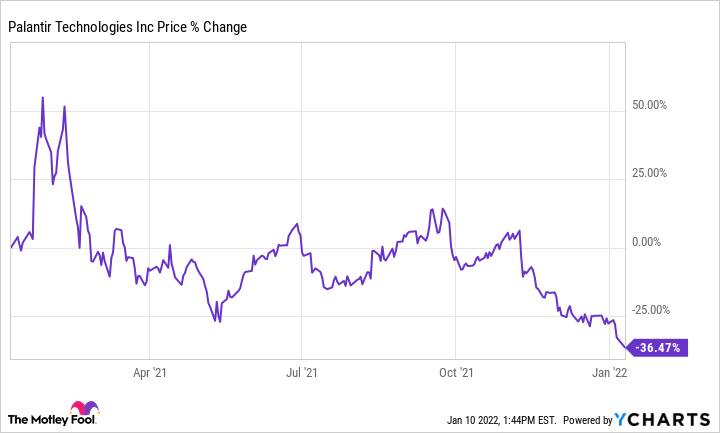What happened
Palantir (PLTR 3.19%) stock is losing ground again on Monday. The company's share price was down roughly 3% as of 2 p.m. ET and had been down by as much as 7.3% in the daily session.
Meanwhile, the S&P 500 index was down roughly 1%, and the even more tech-heavy Nasdaq Composite index was down roughly 1.2% as of 2 p.m. ET. Palantir has gotten hit hard as the market has become more cautious about heavily growth-dependent stocks, and more volatility could be in the cards if risk-heavy investments continue to fall out of favor.

Image source: Getty Images.
So what
There doesn't appear to be any business-specific news behind Palantir's stock slide today, but investor appetite for growth stocks is waning amid shifting macroeconomic conditions. Comments and transcripts from the Federal Reserve's meeting in December indicate that the central bank plans to significantly reduce its bond purchases and raise interest rates this year. The Fed may also reduce its holdings in Treasury bonds and mortgage-backed securities. Monday saw investors weighing these looming pressures in addition to the U.S. 10-year Treasury bond yield hitting a two-year high of 1.8%.
All of these factors point to a less favorable backdrop for growth stocks. Rising bond yields mean that investors are able to get more substantial returns with relatively little risk, and rising interest rates tend to temper investor enthusiasm and mean that it's more expensive for companies to fund growth initiatives with debt.
Now what
Palantir stock is now down roughly 36.5% over the past year, it and trades down roughly 64% from the lifetime high that it hit last January.
Even after the pullback, Palantir has a market capitalization of roughly $32 billion and is valued at approximately 16 times this year's expected sales. On the other hand, the company has built an intriguing position in the data analytics services industry, and it anticipates being able to grow sales at a greater than 30% annual rate through 2025. For risk-tolerant investors, the recent sell-offs could present a worthwhile entry point, but the stock could see more volatile trading in conjunction with market momentum and macroeconomic shifts.






